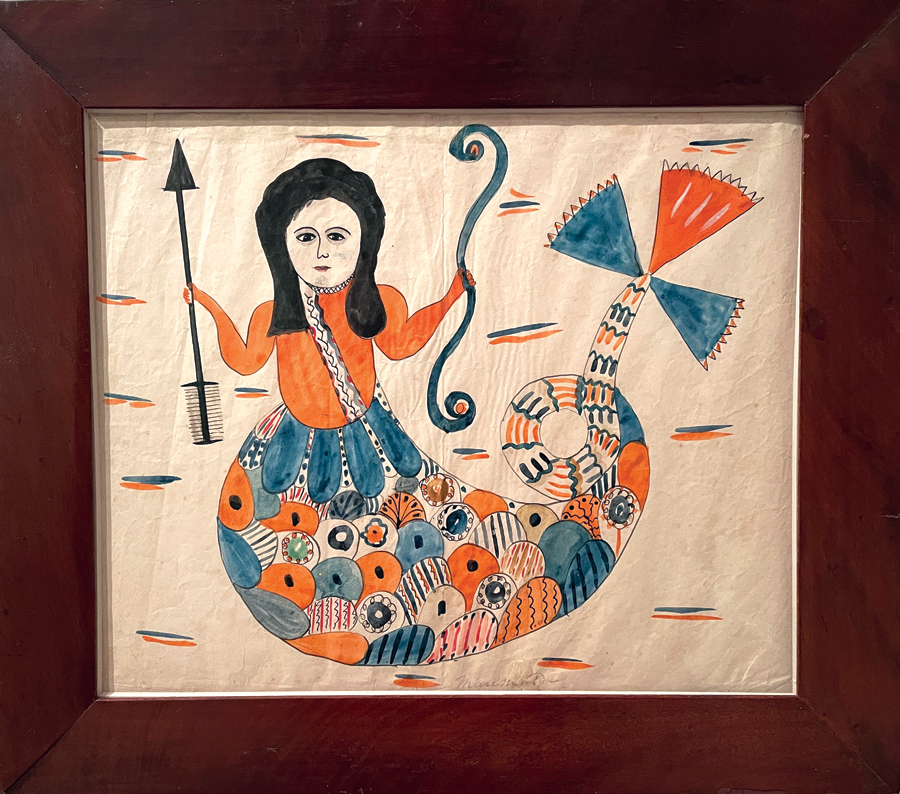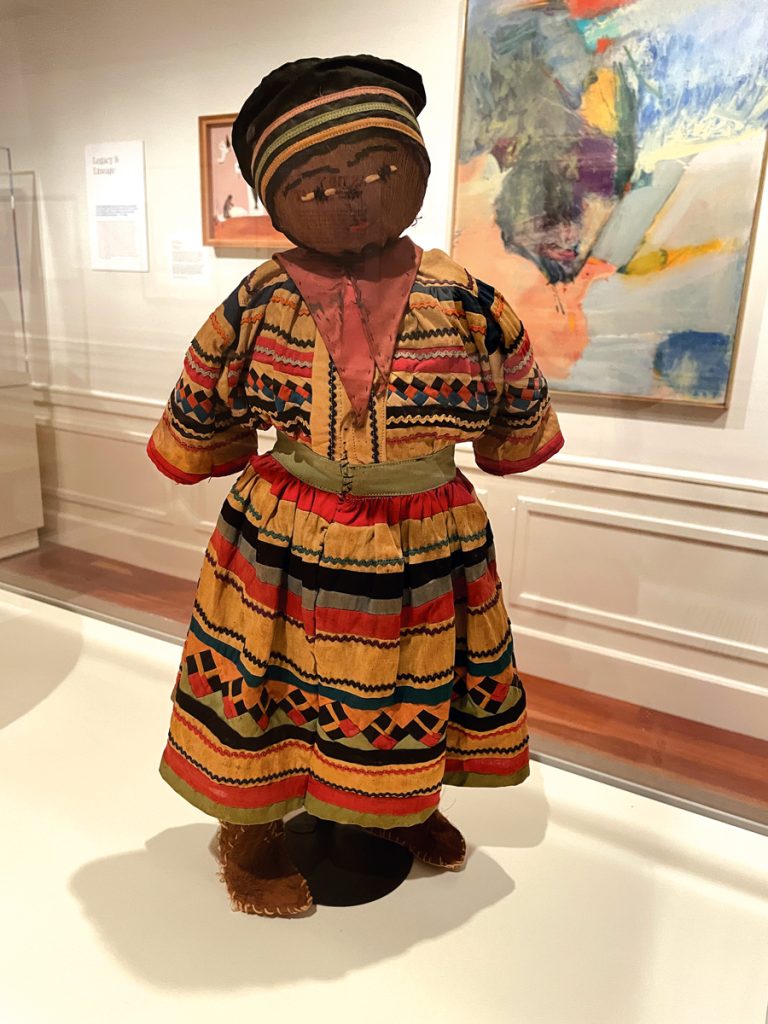
New Exhibit, ‘As They Saw It,’ Celebrates ‘Herstory’
By EMILY HILBERT
COOPERSTOWN
Women artists are seldom seen and rarely heard in the museum space. This is a known fact that has troubled both professionals in the museum field and visitors alike for ages. Six women curators, however, are rewriting that issue and reclaiming the “herstory.”
Their exhibit, “As They Saw It: Women Artists Then & Now,” opened at Fenimore Art Museum last week to much excitement. The exhibit, a partnership between FAM, Springfield Museums, and the Museum of Fine Arts, Boston, is not only a collaboration of institutions, but of female viewpoints as well. As described in a press release, “As They Saw It” is about women, by women and curated by women.”
Julia Madore and Ann Cannon, associate curators of American Art at FAM, teamed up with Maggie North and Sophie Combs from Springfield Museums and Martina Tanga and Erica Hirshler from the Museum of Fine Arts, Boston. Challenging themselves to look through their collections to find what these institutions had in common, they wanted to showcase a diverse array of artists in everything from age, background, race, and art medium.
“It was interesting to see what everyone could bring to the table,” said Cannon.
The exhibit, which travelled from the Springfield Museums, makes its final stop here at FAM before the artwork is returned to their home collections.
The show is unique to FAM, as it is a first to cover such a lengthy timeline of artists—early 19th century to today—as well as a diversity of art mediums and even female artists themselves. The layout within the exhibit is also unique, as the curators bridged the gap and paired classically-trained artists next to folk art or any work that has traditionally been deemed “women’s crafts.”

Just because a piece of art falls under the category of “women’s crafts” does not mean it cannot still tell a compelling story. When asked which piece within the exhibit spoke to her the most, Madore pointed to “Maremaid” from 1815, by Mary Ann Wilson. Wilson uses a play on words with “mare,” meaning “sea” in Latin, and a shortened version of her own name to depict herself as a strong warrior of the water. Armed with weapons instead of the usual mermaid comb and mirror, Wilson puts herself in the traditionally male role of protector. The scales on her tail, resembling that of a quilt, reminds the viewer that she can hold both roles at once: warrior and woman. Her romantic partner, Miss Brundage, may have also had an impact on the honesty of her work, as they were in a same-sex relationship, which was publicly acknowledged during a time when scarcely any were.
When asked the same question, Cannon gestured over to the quilted piece toward the front of the exhibit. “Black Barbie,” from 1996, by Kyra Hicks, speaks on women’s bodies and bodily autonomy, which Cannon feels is an especially important topic to bring up in today’s political and cultural climate. The quilt was first displayed in 2008; however, this is the first time it is being brought out for a big exhibit since then, giving the opportunity to create a narrative around inclusivity in beauty standards for all races, ages, and skin tones.
Madore says she hopes people “see the show and realize how far women artists have come, but also how far museums need to go to bring these women forward.”
The exhibit is broken up into four separate sections, but it is always good to start at the beginning. “As they Saw It: Women Artists and Now” is on the second floor, in the Scriven Gallery. The room is unique to other galleries in the museum, as you have to open a door to get in. This creates an enclosed space in which visitors can reflect without the bustle of people looking at other exhibits. When it is quiet, it is a great place for introspection, and to really look at the layout of the pieces on display.
The introductory panel for the exhibit is inside the room to the left side of the wall, enticing visitors to step fully into the world of female artists in order to read it. As the visitor reads the verbiage, they begin to realize they are face-to-face with a wall of confident eyes. It is then the visitor realizes they are at the first section of the exhibit, “I & Myself,” which “showcases self-portraits and explorations or identity that assert the perspectives of their makers.”
Strong, present, and honest, these works display the self-expression of the artist and challenge common beauty standards. Such is the case with Polly Thayer’s, “Self-Portrait,” from 1989. Thayer completed the work when she was 87, and she does not shy away from view. Instead, she confidently shows her face, aged in the wisdom gained from a life fully lived. Ellen Day Hale’s “Self-Portrait,” from 1885 exudes another type of confidence, once reserved for men of the time. But here, her masculine posture commands the respect she deserves.
Moving further into the room, the next section is “Sisterhood & Community,” which “honors the networks of support that women artists create to empower one another and overcome discrimination.” Around the corner from this label is a collection of photographs of women athletes from the Springfield Museums. Taken by women, of women, Etta Clark and Cary Herz capture the spirit of female athleticism at all ages, races, and body shapes.
“Legacy & Lineage” is the next section, moving back toward the entrance, and “speaks to the importance of passing on creative practices and techniques, calling attention to multi-generational relationships built on familial ties and mentorships.”

No examples of artwork better encompass this section than that of Elizabeth Hickox and Louise Hickox, both titled “Basket,” from 1920 and 1915, respectively. The mother-daughter duo specialized in “tightly woven, lidded baskets.” Traditions passed down are something to be treasured and, as previous generations taught Elizabeth how to weave, Louise also passed this knowledge onto future generations. Another example of learning from observation and passing down generational knowledge is “Doll,” from 1950, which was made by a Seminole girl once known, from Seminole, Florida (PHOTO 8). Expected to create clothing for the family, young Seminole girls watched their mothers work, and practiced their craft by making clothing for dolls.
The final section of the exhibit is “Women & The Arts,” which reminds the visitor that “although women have always contributed to the history of art, gender discrimination and lack of access to training and art institutions has resulted in an imbalance in the display and recognition of women’s artwork that continues today.” This goes perfectly with the sentiments expressed in the press release for the museum, which explains how “in an era of debate about women’s rights, and when museums are striving to increase representation in their collection, the exhibition embraces conversations about contemporary issues related to the arts, advocacy, and gender.”
“As They Saw It: Women Artists Then & Now” is one example of a series of exhibits created as part of the Art Bridges Initiative, the goal of which is to expand access to American art across the nation. To learn more about this initiative, visit artbridgesfoundation.org. Several programs related to the exhibit will be held during the spring and summer months—see fenimoreart.org for more information. The Fenimore Art Museum is open Tuesday-Sunday from 10 a.m. to 4 p.m. “As They Saw It: Women Artists Then & Now” will be on display until September 2.

